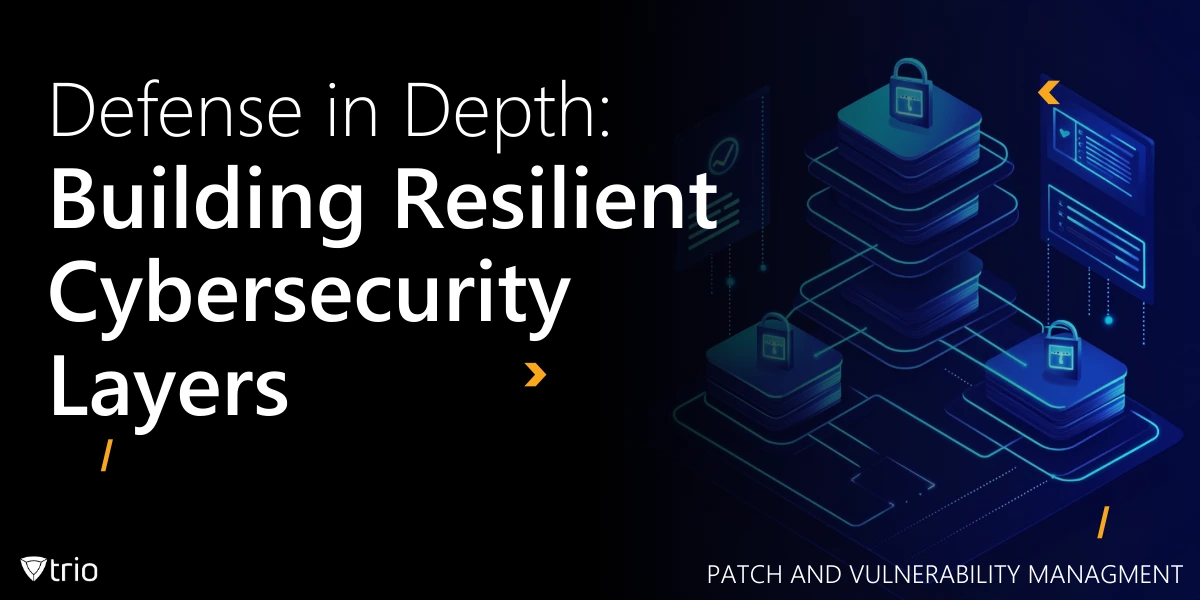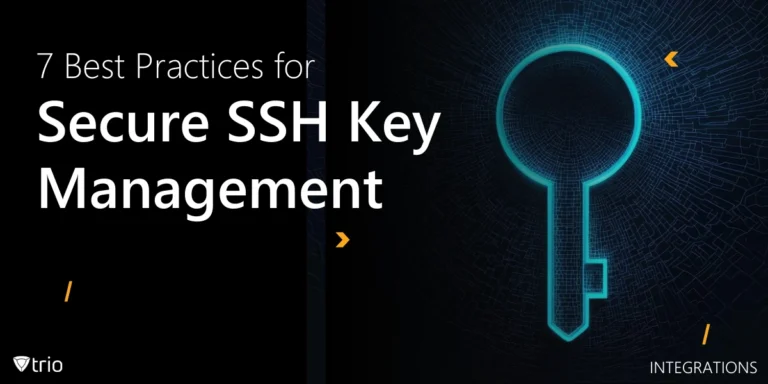Cyber threats have evolved from simple nuisances to major disruptions that can cripple entire organizations. Yet, some still cling to the idea that a single security measure will stop them all. This blog takes a layered approach to cybersecurity, acknowledging that the digital world demands more than an alarm at the door.
Picture a treasure chest protected by only one flimsy lock. That’s what a lone security solution looks like. Attackers can pick that lock or smash it with a hammer, leaving valuables up for grabs. We need multiple locks, bolts, and safety nets working in unison to discourage, detect, and defeat intruders.
In the following sections, we’ll explore why a single firewall alone won’t save the day and how combining several defenses forms a shield for vulnerability management that’s tough to penetrate. This approach is often called Defense in depth, and it’s not just another trend. It’s a calculated, dynamic, and downright necessary security framework.
Defense in Depth Cybersecurity Definition
What is defense in depth cybersecurity? This question arises when a single protective measure fails to quell concerns about modern threats. Defense in depth weaves together multiple tactics—like network segmentation and endpoint safeguards—so if attackers cut through one barrier, they’re almost immediately greeted by the next.
Defense in depth underscores that no single shield can block every blow. Instead, each barrier works in concert, giving defenders the advantage of time and visibility. An intruder who bypasses one checkpoint faces a gauntlet of further obstacles.
This tactic is a lifesaver when cybercriminals get sneaky with advanced threats or zero-day exploits. It’s akin to building a fortress, not just renting a motel room with a single lock. By deploying layered defenses, organizations place multiple gates between hackers and precious data, heightening overall resilience on all fronts.
Key Layers of Defense in Depth
From firewalls and endpoint security to identity management and employee training, each layer serves a unique purpose. Below, we break down the layers of defense in depth, explaining how they work together to keep organizations secure.

1. Perimeter Security
The defense in depth strategy is having multiple lines of protection. These layers address everything from the outer walls to the heart of crucial systems. At the outset lies perimeter security, which keeps opportunistic attackers from strolling in.
Within perimeter security, elements like a reliable firewall serve as gatekeepers, examining traffic and blocking malicious intrusions. Incorporating control systems cybersecurity defense in depth strategies helps safeguard specialized environments. Combined with robust cyber threat management, these measures form a stout barricade, ensuring external assailants can’t effortlessly breeze through unchecked doors.
2. Endpoint Security
Endpoints are like front-line soldiers, constantly encountering danger as they interact with external networks and applications. Laptops, smartphones, and tablets become prime targets for malware or unauthorized access. When vulnerabilities appear on these devices, attackers can pivot deeper into the system, making endpoint safeguards an essential shield in layered protection.
Mobile Threat Defense goes beyond antivirus scans by detecting suspicious apps, malicious links, and unsafe network connections on phones and tablets. Many organizations opt for broader endpoint strategies that include encryption and automated patches. Keeping devices in check denies bad actors any easy launching pad.
3. Application and Data Security
Applications are prime hunting grounds for exploits, especially if coding practices are lax. Attackers slip in through overlooked flaws, undermining performance and integrity. Relying on defense in depth cybersecurity tools means scanning code for bugs, automating patch rollouts, and bolstering internal architecture, so vulnerabilities shrink faster than an ice cube in summer.
Security assessment tools evaluate potential weaknesses, revealing entry points before adversaries discover them. Meanwhile, data loss prevention keeps sensitive information from leaking or being misused internally. With thorough monitoring in place, organizations can spot suspicious user behavior, lock down crucial files, and ensure that data remains as private as intended.
4. Identity and Access Management
No matter how robust your perimeter or endpoint controls, all bets are off if someone sneaks in with stolen credentials. Multi-factor authentication adds layers of validation, forcing any would-be intruder to produce more than a simple password. It’s like asking for an ID, a key, and a secret handshake. No freebies for suspicious visitors.
Need concrete proof? One of the best defense in depth cybersecurity examples is restricting access to critical systems based on role or location. Even if an attacker gains a foothold, they’ll be locked out of higher-level controls. By tightening identity policies and scrutinizing login attempts, organizations stay a step ahead.
5. Security Awareness and Human Factor
People often underestimate their role in preventing a company data breach. Real defense in depth cybersecurity examples highlight how one phishing click can unravel months of planning. That’s why many firms conduct a cybersecurity tabletop exercise, simulating attacks and training employees to respond swiftly. Human vigilance can be a powerful shield.
How These Layers Work Together in Real-World Scenarios
Imagine a skilled hacker launching a phishing campaign, hoping someone opens a malicious link. Even if a curious click occurs, multiple defenses kick in: email filtering quarantines suspicious attachments, endpoint controls isolate anomalies, and identity checks prevent unauthorized data access. Each layer supports the others, creating a coordinated safety net.
In real-world breaches, infiltration rarely comes from just one flaw. Attackers move laterally, seeking overlooked weaknesses. Perimeter monitoring catches unusual traffic, while endpoint solutions block viruses. Meanwhile, application safeguards reject suspicious script injections. If one barricade falls, the rest can still hold off intruders, buying time to strengthen compromised areas.
Layered security doesn’t wait for an emergency; it stays active around the clock. It spots anomalies, investigates them, and either neutralizes or escalates threats. This seamless interaction of different protective elements forms a harmony that’s tough to break, especially when every segment is tuned to anticipate and respond to emerging risks.

Trio: Your Secret Weapon for Defense in Depth
Defense in depth isn’t just about firewalls and encryption; it’s also about managing the very devices that interact with company networks daily. This is where Mobile Device Management (MDM) plays a crucial role. A secure perimeter is meaningless if unmanaged devices create open doors. That’s why solutions like Trio are essential.
With Trio, organizations can enforce security policies, detect vulnerabilities, and manage devices from a single dashboard—tightening endpoint security as part of a layered defense strategy. Trio helps fortify every device. Ready to see it in action? Try our free demo today and level up your security!
Final Thoughts: Implementing a Balanced Defense Strategy
Defense in depth isn’t a gimmick; it’s a thoughtfully engineered method to safeguard valuable data and systems. Once the realm of large corporations, these tactics have become standard for mid-sized entities too. Each layer reinforces the other, forming a comprehensive barricade that greatly reduces the odds of a catastrophic breach.
Developing an extensive security framework may seem daunting, but the payoff is enormous. By regularly evaluating each layer, organizations stay agile in a shifting threat landscape. When new attack vectors surface, there’s a strong foundation ready to adapt. Ultimately, layering security fosters peace of mind and fortifies digital assets against chaos.
Get Ahead of the Curve
Every organization today needs a solution to automate time-consuming tasks and strengthen security.
Without the right tools, manual processes drain resources and leave gaps in protection. Trio MDM is designed to solve this problem, automating key tasks, boosting security, and ensuring compliance with ease.
Don't let inefficiencies hold you back. Learn how Trio MDM can revolutionize your IT operations or request a free trial today!




